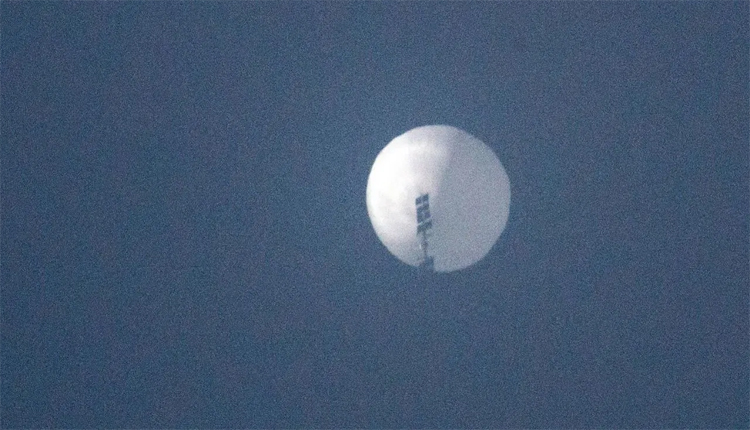New Delhi: Demonstrating its advanced aerial capabilities, the Indian Air Force (IAF) has successfully shot down a suspected Chinese spy balloon operating at an altitude exceeding 55,000 feet over the eastern front. This recent operation underscores India’s growing prowess in aerial defence, paralleling similar actions taken by the United States in the previous year.
The downed balloon, reported to be smaller than the one the US Air Force intercepted last year, was detected over the Andaman and Nicobar Islands region. According to sources, the IAF utilised Rafale fighter jets to neutralise the balloon, a task that posed significant challenges given its high-altitude flight.
In early 2023, the US Air Force employed F-22 Raptor fighter jets to dismantle a Chinese spy balloon off the coast of South Carolina. Initial investigations by US officials revealed that the balloon was equipped with high-resolution cameras, suggesting its use for surveillance purposes. However, China denied these allegations, asserting that the balloon was intended for research and had inadvertently entered US airspace due to adverse weather conditions.
Similar to its US counterpart, the IAF’s operation involved precise manoeuvres to intercept and down the balloon, which is believed to be equipped with a steering mechanism to monitor expansive geographical areas. Dr. Rajiv Malhotra, a defence analyst, commented, “The successful downing of the balloon by the Rafales showcases India’s enhanced aerial defence systems and its ability to respond swiftly to such threats.”
Following the US’s aggressive stance against perceived espionage activities by Chinese balloons, a heated exchange of accusations ensued between Washington and Beijing. The US maintained that these balloons posed significant security risks, while China reiterated that their balloons were solely for scientific research, inadvertently straying into foreign airspace.
The recent incident in India has intensified concerns over airspace security and the potential for espionage. The IAF has reaffirmed its commitment to safeguarding national airspace and has pledged to remain vigilant against any future incursions.
Meanwhile, diplomatic channels remain strained as both superpowers navigate the complexities of aerial surveillance and national security. Experts suggest that such incidents could lead to increased tensions unless clear protocols and mutual understandings are established.
As global powers continue to assert their dominance in aerial and space domains, the downing of spy balloons serves as a stark reminder of the evolving nature of modern warfare and the critical importance of maintaining robust defence mechanisms.



Comments are closed.